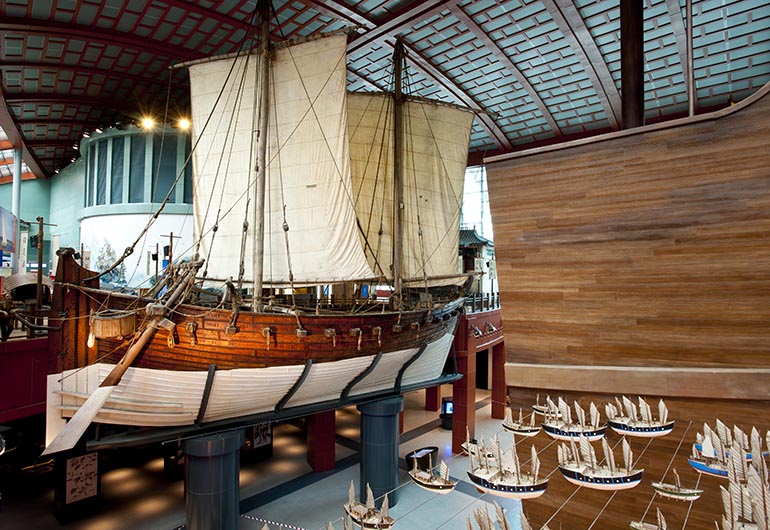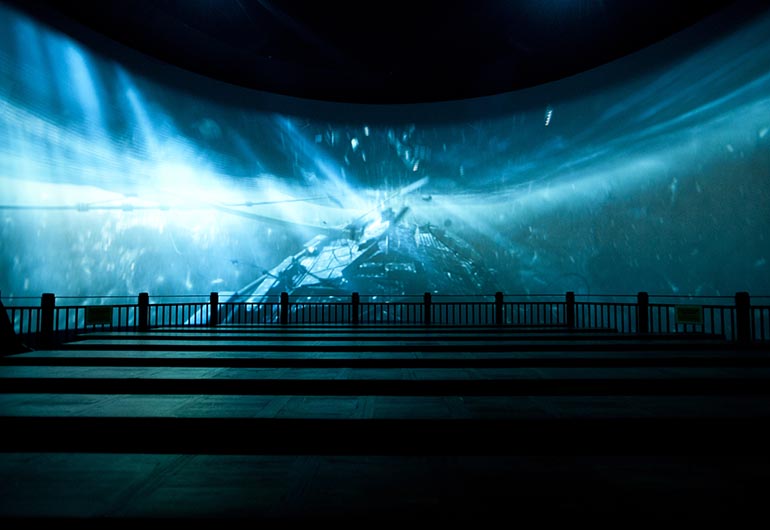INTRODUCTION
Imagine recreating the awesome sounds, sensations and feelings of a ship sunk by a typhoon, then taking the audience to a watery end surrounded by marine life — all in one compact theatre. That’s the experience visitors have when they’re seated in the Typhoon Theatre at Singapore’s Maritime Experiential Museum.
It’s one amazing historical journey and just part of a museum that celebrates the final voyage of the ‘Jewel of Muscat’. This famous Arab dhow sailed the Far East trade routes over 1100 years ago and was shipwrecked near Java.
This is an immersive experience at its best with audiovisual and special effects surrounding the audience to recreate eerie light, spectacular color, terrifying sounds and vibrations and the raw power of wind and waves. The organizers wanted an experience that encourages imagination and creativity. They certainly have that.










.jpg?width=1500&height=995&name=ELC501_N17_medium%20(1).jpg)





